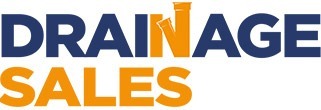Can Perforated Pipes Harvest Rainwater?

Rainwater harvesting is a sustainable way to manage water resources. While perforated pipes can help collect and drain rainwater, their primary purpose is to manage surface water and prevent water damage. Practical rainwater harvesting typically involves collecting water from gutters into storage systems, but perforated pipes can still play a role in the overall process when paired with the right setup.
What Are Perforated Pipes?
Perforated drain pipes have small holes that allow water to enter from the surrounding soil. These pipes are commonly used in drainage systems, including French drains and garden drainage, to direct excess water away from areas prone to flooding or erosion.
Unlike solid, unperforated pipes that transport water away without soil absorption, perforated pipes allow for some water infiltration, which makes them suitable for managing surface water. While they can assist in rainwater harvesting by directing water into underground tanks or infiltration crates, they are not a direct replacement for gutter-based systems.
How Do Perforated Pipes Fit Into Rainwater Harvesting?
Perforated pipes excel in surface water management, where they help reduce waterlogging by collecting rainwater that naturally filters through the soil. When installed in drainage trenches, they can direct this water to underground tanks or soakaway systems.
In some cases, the collected water can be used for irrigation or pumped to above-ground storage units like water butts. However, this setup typically requires additional components, such as pumps, to make the water accessible.
Benefits of Using Perforated Pipes for Water Management
- Water Conservation: Perforated pipes reduce surface water runoff and contribute to groundwater replenishment when paired with proper storage systems.
- Foundation Protection: By managing water flow around your property, they reduce the risk of water damage to foundations and underground structures.
- Improved Soil Quality: Allowing water to seep back into the soil helps prevent erosion and improves soil health.
- Flexible Underground Drainage Solutions: They complement existing rainwater harvesting systems, helping manage overflow from tanks or crates.
Best Practices for Installing Perforated Pipes
- Choose the Right System: Use perforated land drain pipes or twinwall drainage pipes for areas requiring better water management.
- Prepare a Gravel Base: A gravel layer enhances drainage efficiency and prevents blockages.
- Maintain a Proper Slope: Ensure the pipe slopes gently to allow water flow without pooling.
- Integrate with Tanks or Crates: Pair perforated pipes with underground tanks or soakaway crates to improve water storage and reuse.
Perforated Pipes vs. Unperforated Pipes
- Perforated Pipes: Ideal for managing surface water and replenishing soil moisture. Best suited for use in drainage trenches and soakaways.
- Unperforated Pipes: Used for transporting water away from an area without allowing infiltration, such as in sewage systems or where water must be directed quickly.
Wrapping Things Up
While perforated pipes can contribute to rainwater harvesting, they are best used as part of a larger water management system that includes underground tanks or soakaway crates. For direct water harvesting into water butts, roof gutters remain the most practical solution. Proper installation of perforated pipes can enhance drainage, conserve water, and protect your property from water-related damage.



